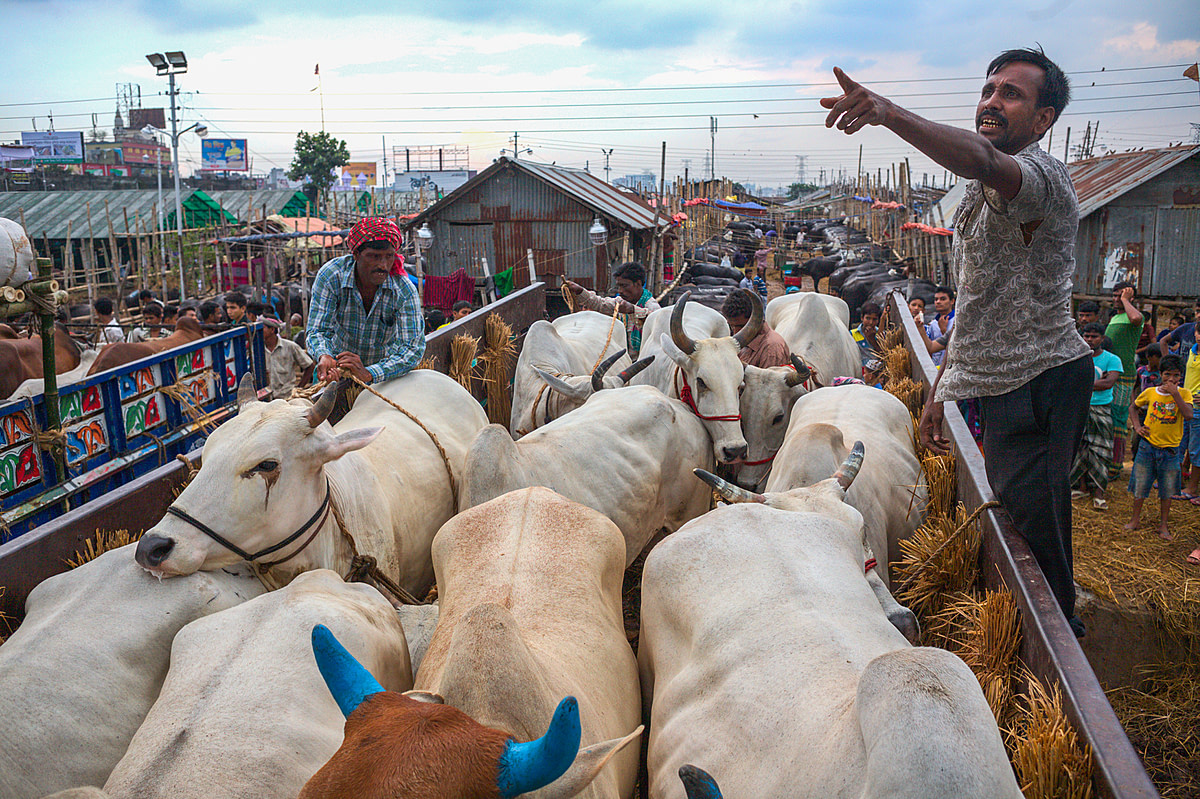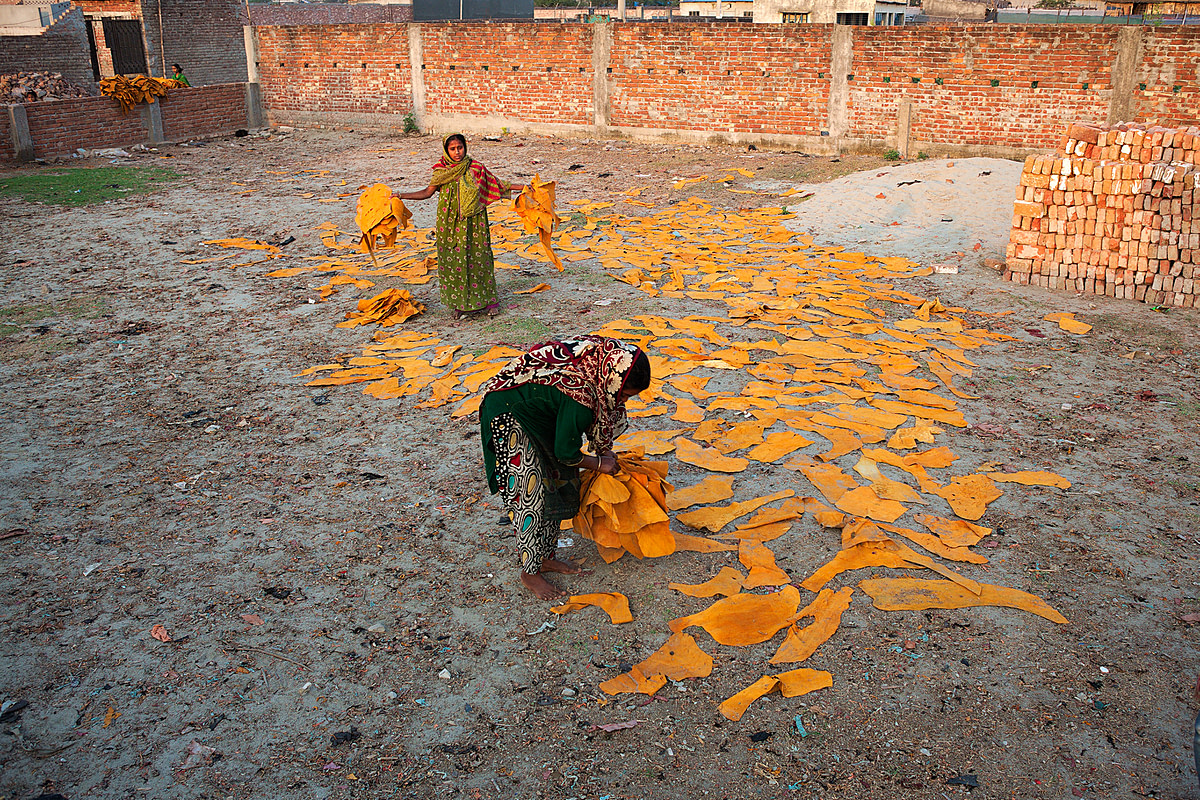In Photos: The Leather Industry with Christian Faesecke
An aerial view of buyers and sellers at the cattle market of Bagachra, one of the largest cattle markets in southwest Bangladesh, 2015. Christian Faesecke / We Animals Media
Photographer: Christian Faesecke
Author: We Animals Media
To view more images from this collection, visit our Leather Industry gallery.
[Content warning: contains graphic images]
Where does leather come from? The label may offer a country’s name, but what’s the story behind that single label?
Answering where leather comes from is a complex, international story across a 4,000 km border. It’s not a byproduct of meat production, but an industry unto itself. We Animals Media contributor Christian Faesecke documents how cows – who are considered holy – are trafficked from India to Bangladesh where they are killed for leather.
Due to strict prohibitions against killing cattle in India, a black market cattle trade between India and Bangladesh has emerged. Indian cattle used for leather are transported from the Ganges River via regional Indian cattle markets to the border. In the livestock markets of Bangladesh, these animals are re-certified and declared Bangladeshi cattle. In cramped conditions, the animals are then transported to the slaughterhouses of Dhaka, where an industrial process starts, creating river pollution, sick workers, and cheap leather for world markets.
Sellers smuggle approximately two million cattle annually over the 4,000 km border, often fetching twice the local market rate. The journey is so difficult for many of the cattle that smugglers will waterboard them to force them to continue walking after they have collapsed. The technique, most infamously known as a torture method used in interrogations, reproduces the sensation of drowning. At night, the animals are usually smuggled in large herds over the difficult-to-control border to Bangladesh.
Bagachra, a small village near the border, possesses the largest cattle market in southwest Bangladesh, where the Indian cattle are reportedly re-certified to local ones. From here, the animals can be legally re-sold and transported. They are tightly packed into cattle transporters and distributed all over Bangladesh where they are killed in abattoirs or at night by road-side slaughter.
In Hazaribagh, a part of western Dhaka reknowned for its tanneries, a worker bends over a cow hide. Using a specially formed knive, he removes the chemically dissolved layer of fat from the skin. Bangladesh, 2015. Christian Faesecke / We Animals Media
While most of the bodies are exported to the Gulf States for food, the skins are transported to Dhaka’s 200 tanneries, where tens of thousands of workers fall ill from the hazardous chemicals used in processing, which contaminate the rivers. Once processed, the leather is sold to global markets, where it is often impossible to know its origins from single-country labeling.
Christian’s photo report sheds light on the circumstances surrounding the global production and sale of leather, and shows the working conditions of people who are generally not seen by the end consumer.
Data sources: The Quint / The Guardian
Images by Christian Faesecke.
Visit our stock platform to explore and download these visuals and help tell the story of leather’s true origins.
Donate today and help us continue to produce compelling global investigations into these cruel industries.
More like this from We Animals Media:
New Investigation: Animal Markets – Northern India, 2021
by We Animals Media | Nov 17, 2021
5,000 Foxes: The Transaction of a Mercy Release Rescue
by Jenny Tang and Kelly Guerin | Jun 11, 2020
The Sounds of A Slaughterhouse
by Kelly Guerin | Apr 2, 2020















